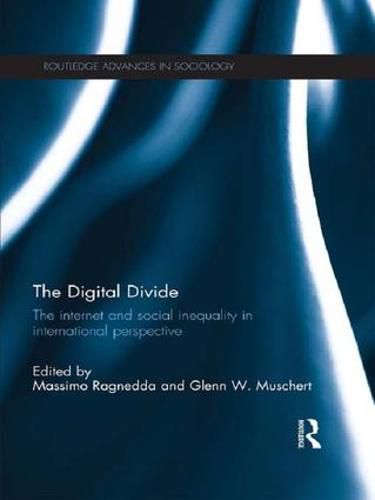Readings Newsletter
Become a Readings Member to make your shopping experience even easier.
Sign in or sign up for free!
You’re not far away from qualifying for FREE standard shipping within Australia
You’ve qualified for FREE standard shipping within Australia
The cart is loading…






This book provides an in-depth comparative analysis of inequality and the stratification of the digital sphere.
Grounded in classical sociological theories of inequality, as well as empirical evidence, this book defines ‘the digital divide’ as the unequal access and utility of internet communications technologies and explores how it has the potential to replicate existing social inequalities, as well as create new forms of stratification. The Digital Divide examines how various demographic and socio-economic factors including income, education, age and gender, as well as infrastructure, products and services affect how the internet is used and accessed. Comprised of six parts, the first section examines theories of the digital divide, and then looks in turn at:
Highly developed nations and regions (including the USA, the EU and Japan);
Emerging large powers (Brazil, China, India, Russia);
Eastern European countries (Estonia, Romania, Serbia);
Arab and Middle Eastern nations (Egypt, Iran, Israel);
Under-studied areas (East and Central Asia, Latin America, and sub-Saharan Africa).
Providing an interwoven analysis of the international inequalities in internet usage and access, this important work offers a comprehensive approach to studying the digital divide around the globe. It is an important resource for academic and students in sociology, social policy, communication studies, media studies and all those interested in the questions and issues around social inequality.
$9.00 standard shipping within Australia
FREE standard shipping within Australia for orders over $100.00
Express & International shipping calculated at checkout
This book provides an in-depth comparative analysis of inequality and the stratification of the digital sphere.
Grounded in classical sociological theories of inequality, as well as empirical evidence, this book defines ‘the digital divide’ as the unequal access and utility of internet communications technologies and explores how it has the potential to replicate existing social inequalities, as well as create new forms of stratification. The Digital Divide examines how various demographic and socio-economic factors including income, education, age and gender, as well as infrastructure, products and services affect how the internet is used and accessed. Comprised of six parts, the first section examines theories of the digital divide, and then looks in turn at:
Highly developed nations and regions (including the USA, the EU and Japan);
Emerging large powers (Brazil, China, India, Russia);
Eastern European countries (Estonia, Romania, Serbia);
Arab and Middle Eastern nations (Egypt, Iran, Israel);
Under-studied areas (East and Central Asia, Latin America, and sub-Saharan Africa).
Providing an interwoven analysis of the international inequalities in internet usage and access, this important work offers a comprehensive approach to studying the digital divide around the globe. It is an important resource for academic and students in sociology, social policy, communication studies, media studies and all those interested in the questions and issues around social inequality.